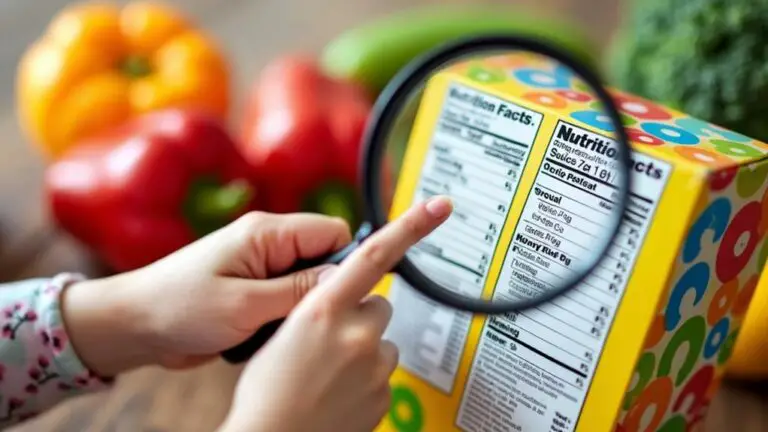Understanding Food Allergies and Intolerances: Family Awareness
Food allergies and intolerances can greatly impact your family's daily life. You'll need to recognize symptoms, which range from mild hives to severe anaphylaxis, and identify common triggers like milk, eggs, and nuts. Diagnosis typically involves skin prick tests or blood tests, with oral food challenges being the gold standard. Manage allergies by teaching label reading, creating a safe home environment, and developing an action plan. You'll face social challenges, but clear communication and education can help. Always be prepared for emergencies by carrying an epinephrine auto-injector and knowing how to use it. With the right knowledge, you can navigate this journey confidently.
Key Takeaways
- Recognize common food allergy symptoms and triggers, including rapid reactions and potential anaphylaxis.
- Understand the difference between food allergies and intolerances, including diagnostic methods for each.
- Develop a family action plan for managing food allergies, including avoidance strategies and emergency response.
- Create a safe home environment by reading food labels and communicating openly about allergies.
- Educate family members, schools, and social circles about food allergies to foster a supportive community.
Recognizing Symptoms and Triggers
Recognizing the symptoms and triggers of food allergies is essential for managing this potentially life-threatening condition. You'll need to be aware that allergic reactions can occur rapidly after exposure to certain foods. Symptoms range from mild, such as hives and swelling, to severe, including difficulty breathing and anaphylaxis.
Common triggers include milk, eggs, peanuts, tree nuts, soy, wheat, fish, and shellfish.
To manage food allergies effectively, keep a food diary and note any symptoms that appear shortly after eating. This can help you identify specific triggers. Be vigilant for signs of anaphylaxis, which requires immediate medical attention. Symptoms include wheezing, persistent cough, and dizziness.
Diagnosis and Testing Methods
For accurate diagnosis of food allergies, healthcare professionals employ several testing methods. Skin prick tests and blood tests measuring specific IgE antibodies are common initial steps.
However, the gold standard for diagnosis is the oral food challenge, conducted under medical supervision to monitor for serious reactions.
If you suspect a food intolerance, your health care provider may recommend keeping a food and symptom diary, followed by an elimination diet.
It's essential to highlight that standard allergy testing isn't typically used for intolerances.
To guarantee proper diagnosis and management, consult a clinical immunology/allergy specialist. They'll use evidence-based methods to help prevent misdiagnosis and create appropriate treatment strategies.
Management Strategies for Families

Once a food allergy diagnosis is confirmed, families face the challenge of managing it effectively. To guarantee your child's safety, maintain open communication about food allergies and teach them to read food labels. Empower your children to advocate for themselves in social situations and create a safe environment at home by avoiding allergens.
Develop a clear action plan for allergic reactions, including:
- Recognizing symptoms
- Knowing how to use epinephrine auto-injectors
- Educating family members and caregivers
- Preparing for emergencies in various settings
For young children, focus on teaching them to identify safe versus unsafe foods.
Connect with support networks and other families managing food allergies to share experiences and strategies.
Social Challenges and Solutions
Children with food allergies frequently face unique social challenges, particularly in settings where food plays a central role. To help navigate these situations, you should communicate clearly about your child's allergies before events. Inform hosts in advance and familiarize yourself with school policies to guarantee safe food options and minimize risks.
| Challenge | Solution | Benefit |
|---|---|---|
| Parties | Inform hosts | Safe food options |
| School meals | Learn policies | Minimize risks |
| Peer education | Teach friends | Supportive environment |
| Exclusion | Build networks | Shared experiences |
| Social anxiety | Clear communication | Increased confidence |
Educating peers about allergy awareness fosters inclusivity and helps children manage their dietary restrictions. Building support networks with other families facing similar challenges provides valuable resources and encouragement. By implementing these strategies, you'll help your child navigate social situations more confidently while managing their food allergy effectively.
Emergency Preparedness and Response

While managing social situations is important, being prepared for emergencies is equally essential.
Emergency preparedness for food allergies involves recognizing symptoms of an allergic reaction, which can range from mild to life-threatening. You should always carry an epinephrine auto-injector and know how to use it properly, as it's vital for anaphylactic reactions.
To enhance your emergency response:
- Maintain a list of emergency contacts
- Regularly review and practice your emergency plan
- Educate caregivers about allergy management
- Keep your epinephrine auto-injector accessible at all times
Conclusion
You're now armed with knowledge to navigate the choppy waters of food allergies and intolerances. Remember, awareness is your compass, guiding your family towards safer dining experiences. Stay vigilant about symptoms, embrace testing methods, and implement management strategies. Don't let social challenges sink your ship; instead, sail confidently with solutions. Most importantly, always be prepared for emergencies. With these tools, you'll weather any dietary storm that comes your way.







